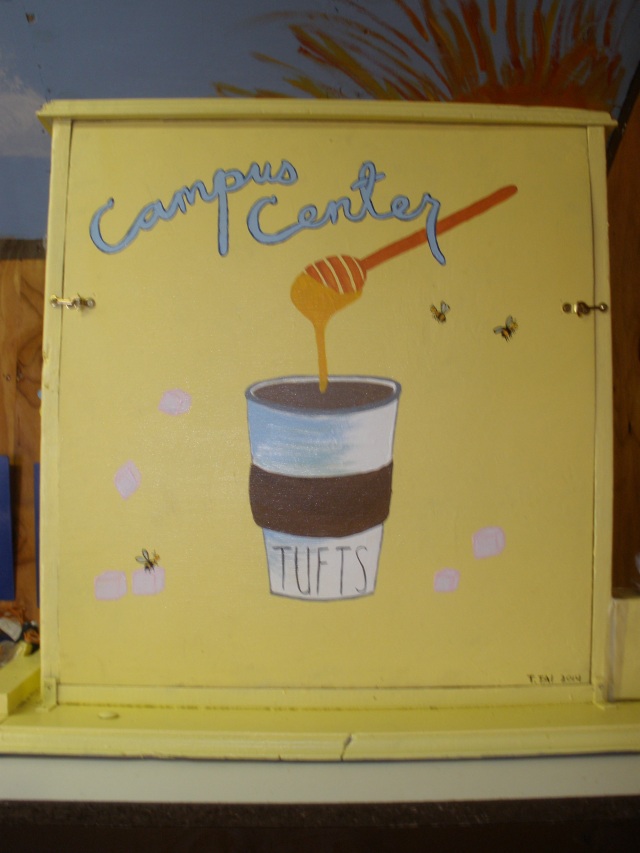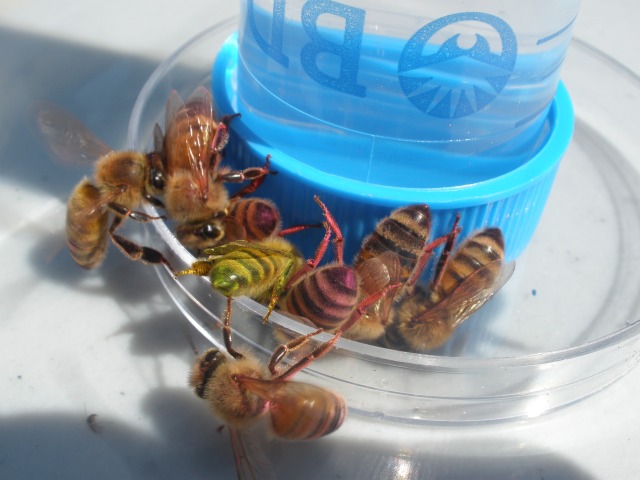
To investigate honey bee mineral preferences, I put out artificial feeders (the upside-down tubes in the video) with different mineral solutions to create a “tasting table” for the honey bees. Once trained to feed from the tasting table (see last week’s How to Train Your Honey Bees), the bees forage at the table, and drink from our feeders for about 5 – 7 hours per trial (being an ecologist, my schedule is governed by weather!).
At the end of each trial, we measure the volume change of the solutions. The mesh structure in the background of the video controls for evaporation and allows us to calculate how much of each solution was actually consumed by our honey bees. Since my team of undergraduates and I are looking at volume consumed as a measure of honey bee preference, we have to watch our tasting table to make sure that only honey bees are drinking our solutions (we get an occasional bumble bee or wasp that we have to shoo away).
We also use this time to observe honey bee behavior. Sometimes the bees peacefully drink from the same artificial feeder (see photo below), and sometimes a fight ensues. Surprisingly, the fight in this video is between two bees from the same hive. It’s hard to tell in the video but the two tussling bees are marked with an orange powder, which means they are both from our observation hive named “Campus Center.” (More on mass-marking bees with pretty colored powder in my next post!)
I say this is surprising because only a small proportion of a hive’s adult bees actually leave to collect food and water. These “forager” bees are the oldest workers (all females!), and bring their goods back to the hive to feed the young (a.k.a brood), the queen, and depending on the season, the males (a.k.a. drones). If these two girls are collecting this solution to bring back to the same hive—why fight?

